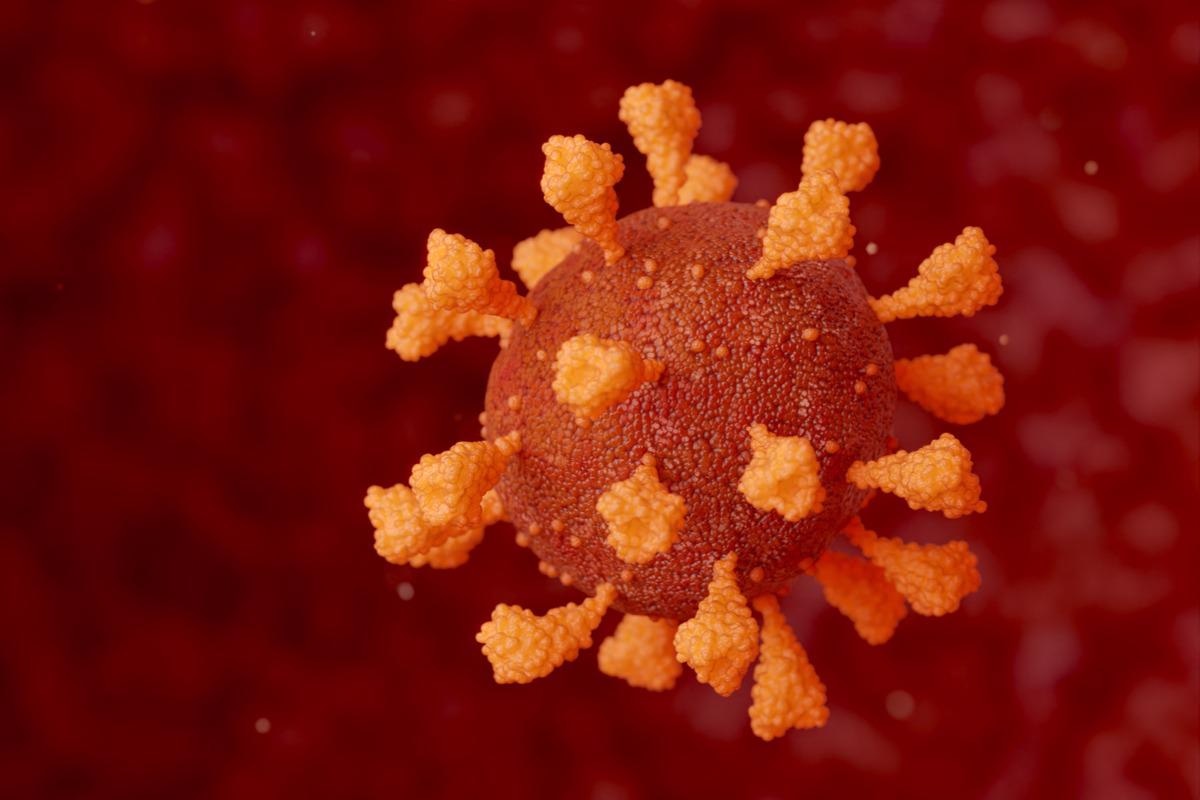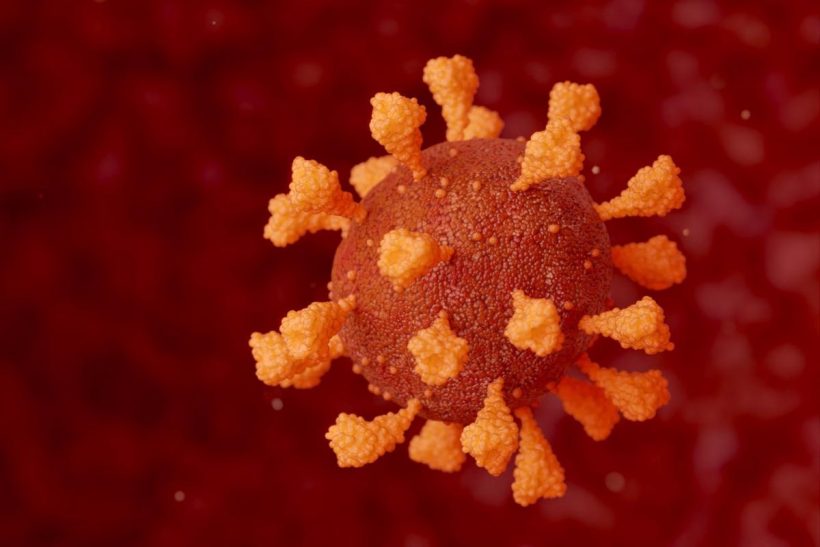In a recent study posted to the bioRxiv* preprint server, researchers demonstrated that envelope (E) proteins of β-coronaviruses (CoVs) could restrict human immunodeficiency virus type 1 (HIV-1) infection.

Background
Severe acute respiratory syndrome coronavirus 2 (SARS-CoV-2), a highly transmissible human CoV (HCoV), emerged in late 2019 and caused the ongoing coronavirus disease 2019 (COVID-19) pandemic. The unprecedented morbidity and mortality caused by COVID-19 have underlined the critical need to learn more about the role of viral proteins in virus pathogenesis and replication.
The E protein is a small 75 amino acid transmembrane protein encoded by the human CoVs, including SARS-CoV-2. The CoVs E protein, similar to the viroporins from the influenza A virus, i.e., matrix protein 2 (M2), and HIV-1, i.e., viral protein U (Vpu), creates an ion channel. The CoVs E protein is essential for viral pathogenicity and the successful release of infectious viruses into the host.
About the study
In the current work, the researchers evaluated the infectivity of the HIV-1 virus in the vicinity of four distinct β-CoV E proteins. The scientists analyzed the biological characteristics of four β-CoVs (SARS-CoV-2, SARS-CoV, Middle East respiratory CoV (MERS-CoV), and HCoV-OC43) E proteins in the presence of HIV-1.
Vectors encoding the HIV-1 genome and CoVs proteins were transfected into human embryonic kidney 293 (HEK293) cells. HIV-1 infectivity was quantified using the TZM-bl cell line (derived from Henrietta Lacks cell clone). The National Institutes of Health (NIH) HIV Reagent Branch of America provided plasmids encompassing the complete HIV-1 NL4-3 genome, i.e., pNL4-3 and pNL4-3ΔVpu. Immunofluorescence investigations of COS-7 cell (African green monkey kidney fibroblast-like cell line) transfections were used to determine SARS-COV-2 E protein intracellular localization.
Results and discussions
The results showed that co-transfection of HEK293 cells with vectors encoding the SARS-CoV-2 E protein and plasmids containing either the HIV-1ΔVpu or HIV-1 (strain NL4-3) genomes significantly limited the infectious HIV-1 release; similar to the herpes simplex virus 1 (HSV-1) glycoprotein D (gD) protein. Immunoprecipitation of SARS-CoV2 E proteins and gD from cell lysates demonstrated that these proteins were expressed efficiently during co-transfections. Notably, SARS-CoV-2 E protein did not affect the synthesis of infectious HSV-1 progeny virus 24 and 48 hours following the infection.
Similar to the SARS-CoV-2 E protein, the MERS-CoV, SARS-CoV, and HCoV-OC43 E proteins were largely localized in the Golgi apparatus and endoplasmic reticulum (ER) cell regions, with no expression at the cell surface. SARS-CoV and SARS-CoV-2 E proteins lowered HIV-1 production by nearly 100-fold. Yet, HCoV-OC43 or MERS-CoV E proteins inhibited HIV-1 infectivity to a limited extent. However, replacing the significantly conserved proline within the SARS-CoV-2 E's cytoplasmic domain abolished the limitation on HIV-1 infection.
The presence of SARS-CoV and SARS-CoV-2 E proteins lowered the levels of HIV-1 proteins. By contrast, the HCoV-OC43 and MERS-CoV E proteins only reduced the HIV-1 protein synthesis moderately. The CoVs E proteins did not affect genome integration or reverse transcription of the HIV-1 virus. Nonetheless, via phosphorylating eukaryotic initiation factor 2α (eIF-2α), the SARS-CoV and SARS-CoV-2 E proteins stimulated the ER-stress pathway, which reduces protein production in cells. These observations illustrated that the SARS-CoV-2-induced restriction of HIV-1 infection was due to its E protein's capacity to stimulate eIF-2α phosphorylation.
The four CoVs E protein or SARS-CoV-2 nucleocapsid (N) proteins did not down-modulate the cell surface expression of bone marrow stromal cell antigen 2 (BST-2). Nevertheless, the HIV-1 Vpu protein and SARS-CoV-2 and SARS-CoV spike (S) proteins drastically down-regulated the BST-2 cell surface expression. Additionally, companion studies indicated that the CoVs E proteins triggered autophagy in HIV-1.
Conclusions
According to the authors, this was the first study revealing that viroporins from a heterologous virus, i.e., CoVs E proteins, could reduce HIV-1 infection.
The study findings demonstrated that CoVs such as SARS-CoV-2 and SARS-CoV significantly limited HIV-1 infection, whereas HCoV-OC43 and MERS-CoV were less restrictive. Similar observations were seen in the amounts of HIV-1 protein production in cells. The SARS-CoV-2 E protein, instead of interfering with RNA synthesis or viral integration, lowered viral protein production. The CoVs E protein-induced ER stress leads to phosphorylation of eIF-2, which inhibits protein synthesis of HIV-1.
Lastly, the study depicted that E proteins of four CoVs and the SARS-CoV-2 N protein did not substantially lower BST-2 expression. On the contrary, the HIV-1 Vpu, SARS-CoV-2, and SARS-CoV S proteins decreased BST-2 cell surface expression. Additional investigations are required to understand the CoVs S protein domains relevant for their interactions with BST-1.
*Important notice
bioRxiv publishes preliminary scientific reports that are not peer-reviewed and, therefore, should not be regarded as conclusive, guide clinical practice/health-related behavior, or treated as established information.
- Henke, W. et al. (2022) "The Envelope Protein of SARS-CoV-2 Inhibits Viral Protein Synthesis and Infectivity of Human Immunodeficiency Virus type 1 (HIV-1)". bioRxiv. doi: 10.1101/2022.03.23.485576. https://www.biorxiv.org/content/10.1101/2022.03.23.485576v1
Posted in: Medical Science News | Medical Research News | Disease/Infection News
Tags: Amino Acid, Antigen, Autophagy, Bone, Bone Marrow, Cell, Cell Line, Coronavirus, Coronavirus Disease COVID-19, covid-19, Fibroblast, Genome, Glycoprotein, Golgi Apparatus, Herpes, Herpes Simplex, Herpes Simplex Virus, HIV, HIV-1, Immunodeficiency, Immunoprecipitation, Influenza, Intracellular, Ion, Ion Channel, Kidney, MERS-CoV, Mortality, Pandemic, Phosphorylation, Proline, Protein, Protein Synthesis, Respiratory, RNA, SARS, SARS-CoV-2, Severe Acute Respiratory, Severe Acute Respiratory Syndrome, Stress, Syndrome, Transcription, Transfection, Virus

Written by
Shanet Susan Alex
Shanet Susan Alex, a medical writer, based in Kerala, India, is a Doctor of Pharmacy graduate from Kerala University of Health Sciences. Her academic background is in clinical pharmacy and research, and she is passionate about medical writing. Shanet has published papers in the International Journal of Medical Science and Current Research (IJMSCR), the International Journal of Pharmacy (IJP), and the International Journal of Medical Science and Applied Research (IJMSAR). Apart from work, she enjoys listening to music and watching movies.
Source: Read Full Article
